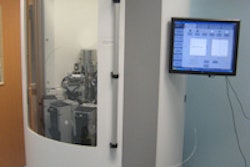Dear AuntMinnieEurope Member,
"Are contrast agents dangerous for the brain?"
That was the headline in the latest of a series of articles that have appeared in German newspapers over the past few weeks.
At the center of the row is the safety of gadolinium-based MRI contrast agents, which is being investigated by both European and U.S. regulators. Our columnist, Dr. Peter Rinck, PhD, has followed this topic extremely closely, and he provides an update in his latest article. Go to our MRI Community, or click here.
Photos of patients with nephrogenic systemic fibrosis (NSF) shocked the global radiology community a few years ago. Thankfully, the condition rarely occurs now, but to understand and shed light on the current discussion about these contrast agents, it's essential to learn from the NSF crisis, Dr. Johannes Heverhagen, PhD, said. Find out more here.
In suspected cases of the Zika virus, radiologists must look for encephalitic lesions with MRI if central neurological deficits or consciousness disorder are observed, according to French researchers who have published findings this month about a recent case. Get the full details here.
Dr. Lorenzo Derchi recently accompanied a close relative to hospital, and this experience had a profound effect on him. In a thought-provoking interview with our editorial board member Dr. Christiane Nyhsen, he explains why he feels it's so important to think deeply about the patient. To learn more, click here. And don't miss Nyhsen's other interviews about radiation protection with Dr. Peter Vock and statistics with Dr. Verena Hoffmann, PhD.
Digital breast tomosynthesis is not all it's cracked up to be, it seems. The technique is preferred when assessing lesion visibility and extent, and also when discriminating between malignant and benign lesions, but synthetic 2D is proving superior when viewing microcalcifications. Visit our Women's Imaging Community, or click here.



















